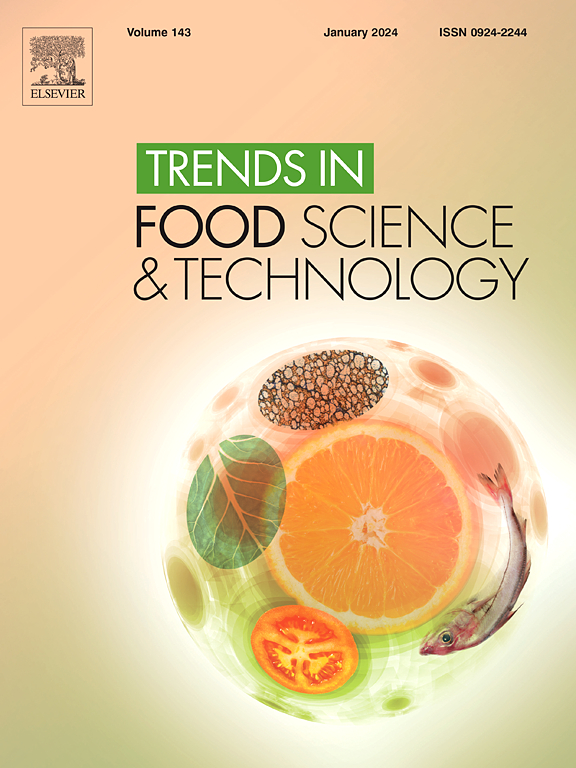Potentially harmful effects of micro-/nanoplastics on humans as well as protective actions of dietary natural products
IF 15.1
1区 农林科学
Q1 FOOD SCIENCE & TECHNOLOGY
引用次数: 0
Abstract
Background
Microplastics and nanoplastics are hot research topics in many fields (e.g., food science, nutrition, environment, ecology and toxicology). They have potentially harmful effects on humans, such as neurotoxicity, carcinogenicity and reproductive toxicity. Humans are exposed to microplastics and nanoplastics through food, drinking water and air. Thus, it is necessary to discover dietary natural products that can protect against these harmful effects caused by microplastics and nanoplastics.
Scope and approach
This review summarizes potentially harmful effects and underlying mechanisms of microplastics and nanoplastics on humans, according to high-quality literature from Web of Science and PubMed databases. Furthermore, dietary natural products that can protect humans against these harmful effects are also summarized and discussed.
Key findings and conclusions
Microplastics and nanoplastics have been detected in many organs of humans, such as the colon, placenta, and heart. Epidemiological studies indicate that microplastics are positively associated with colorectal cancer, myocardial infarction, stroke, and even death. Experimental studies demonstrate that microplastics and nanoplastics have carcinogenicity, neurotoxicity, reproductive toxicity, development toxicity, hepatoxicity, as well as nephrotoxicity, and can induce intestinal dysfunction, diabetes, obesity and cardiovascular diseases. On the other hand, some dietary natural products, such as probiotics, chrysoeriol, salidroside, resveratrol, herbacetin, melatonin, quercetin, and vitamin D, can ameliorate toxicities induced by microplastics and nanoplastics. In the future, priorities should be implemented to discover more dietary natural products that can protect humans from the toxicities of microplastics and nanoplastics. Overall, we hope that this review can attract more attention to the harmful effects of microplastics and nanoplastics and also highlight the potential protective actions of dietary natural products against them.
求助全文
约1分钟内获得全文
求助全文
来源期刊

Trends in Food Science & Technology
工程技术-食品科技
CiteScore
32.50
自引率
2.60%
发文量
322
审稿时长
37 days
期刊介绍:
Trends in Food Science & Technology is a prestigious international journal that specializes in peer-reviewed articles covering the latest advancements in technology, food science, and human nutrition. It serves as a bridge between specialized primary journals and general trade magazines, providing readable and scientifically rigorous reviews and commentaries on current research developments and their potential applications in the food industry.
Unlike traditional journals, Trends in Food Science & Technology does not publish original research papers. Instead, it focuses on critical and comprehensive reviews to offer valuable insights for professionals in the field. By bringing together cutting-edge research and industry applications, this journal plays a vital role in disseminating knowledge and facilitating advancements in the food science and technology sector.
 求助内容:
求助内容: 应助结果提醒方式:
应助结果提醒方式:


